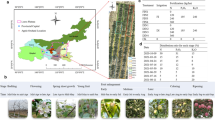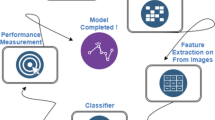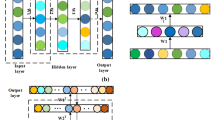Abstract
The objective of this study was to compare the predictions of the protein contents and hardness values by partial least squares regression (PLSR) and principal components regression (PCR) models for bulk samples of Canadian wheat, which were obtained from different locations and crop years. Wheat samples of Canada Western Red Spring (CWRS), Canada Western Hard White Spring (CWHWS), Canada Western Soft White Spring (CWSWS), and Canada Prairie Spring Red (CPSR) classes were obtained from nearby agricultural farms in the main wheat growing locations in the Provinces of Alberta, Saskatchewan, and Manitoba from 2007, 2008, and 2009 crop years. Wheat samples were conditioned to moisture levels of 13, 16, and 19 % (wet basis) and pooled together for developing the regression models. A database of the near-infrared (NIR) hyperspectral image cubes of bulk samples of wheat classes was created in the wavelength region of 960–1,700 nm with 10 nm intervals. Reference protein contents and hardness values were determined using the Dumatherm method and single kernel characterization system (SKCS), respectively. A tenfold cross-validation was used for the ten-factor partial least squares regression (PLSR) and principal components regression (PCR) models for prediction purposes. Prediction performances of regression models were assessed by calculating the estimated mean square errors of prediction (MSEP), standard error of cross-validation (SECV), and correlation coefficient (r). Using the full data set in the protein prediction study, the ten-component PLSR model gave 1.76, 1.33, and 0.68 for the estimated MSEP, SECV, and r, respectively, which were better than the results for the ten-component PCR model (2.02, 1.42, and 0.62, respectively). For the hardness prediction, the estimated MSEP, SECV, and r values were 147.7, 12.15, and 0.82, respectively, for the ten-component PLSR model using the full data set. The PLSR models prediction performances outperformed the PCR models for predicting protein contents and hardness of wheat.







Similar content being viewed by others
References
Ariana, D. P., Lu, R., & Guyer, D. E. (2006). Near-infrared hyperspectral reflectance imaging for detection of bruises on pickling cucumbers. Computers and Electronics in Agriculture, 53, 60–70.
ASABE. (2009). Moisture measurement-unground grain and seeds. In: ASABE Standards. St. Joseph, MI: ASABE.
CGC. (2004). Canadian Grain Commission, Winnipeg, MB. Grain grading guide. Available at: http://www.omicnet.com/omiccan/form/ggg2004.pdf. Accessed 14 November 2013.
Cogdill, R. P., Hurburgh, C. R., Jr., & Rippke, G. R. (2004). Single-kernel maize analysis by near-infrared hyperspectral imaging. Transactions of ASAE, 47(1), 311–320.
Delwiche, S. R. (1995). Single wheat kernel analysis by near infrared transmittance: Protein content. Cereal Chemistry, 72(1), 11–16.
Delwiche, S. R. (1998). Protein content of single kernels of wheat by near infrared reflectance spectroscopy. Journal of Cereal Science, 27, 241–254.
Delwiche, S. R. (2000). Protein content of bulk wheat from near-infrared reflectance of individual kernels. Cereal Chemistry, 77(1), 86–88.
Delwiche, S. R., & Norris, K. H. (1993). Classification of hard red wheat by near-infrared diffuse reflectance spectroscopy. Cereal Chemistry, 70(1), 29–35.
ElMasry, G., Wang, N., ElSayed, A., & Ngadi, M. (2007). Hyperspectral imaging for nondestructive determination of some quality attributes for strawberry. Journal of Food Engineering, 81, 98–107.
Famera, O., Hruskova, M., & Novotna, D. (2004). Evaluation of methods for wheat grain hardness determination. Plant, Soil and Environment, 50(11), 489–493.
Gorretta, N., Roger, J. M., Aubert, M., Bellon-Maurel, V., Campan, F., & Roumet, P. (2006). Determining vitreousness of durum wheat kernels using near infrared hyperspectral imaging. Journal of Near Infrared Spectroscopy, 14(4), 231–239.
Headwall. (2011). Spectral imaging capabilities of hyperspec™ imaging technology in pharmaceutical operations. Available at: http://www.headwallphotonics.com/ downloads/hw_hyperspectral-in-pharma.pdf. Accessed 14 November 2013.
Lu, R. (2001). Predicting firmness and sugar content of sweet cherries using near-infrared diffuse reflectance spectroscopy. Transactions of ASAE, 44(5), 1265–1271.
MacRitchie, F. (1987). Evaluation of contributions from wheat protein fractions to dough mixing and bread making. Journal of Cereal Science, 6(3), 259–268.
Maghirang, E. B., & Dowell, F. E. (2003). Hardness measurement of bulk wheat by single-kernel visible and near-infrared reflectance spectroscopy. Cereal Chemistry, 80(3), 316–322.
Mahesh, S., Manickavasagan, A., Jayas, D. S., Paliwal, J., & White, N. D. G. (2008). Feasibility of near-infrared hyperspectral imaging to differentiate Canadian wheat classes. Biosystems Engineering, 101, 50–57.
Mahesh, S., Jayas, D. S., Paliwal, J., & White, N. D. G. (2011). Identification of wheat classes at different moisture levels using near-infrared hyperspectral images of bulk samples. Sensing and Instrumentation for Food Quality and Safety, 5(1), 1–9.
Mahesh, S., Jayas, D. S., Paliwal, J., & White, N. D. G. (2014). Comparing two statistical discriminant models with a back-propagation neural network model for pairwise classification of location and crop year specific wheat classes at three selected moisture contents using NIR hyperspectral images. Transactions of the ASABE, 57(1), 63–74.
Manley, M., du Toit, G., & Geladi, P. (2011). Tracking diffusion of conditioning water in single kernels of different hardnesses by near infrared hyperspectral imaging. Analytica Chimica Acta, 686(1–2), 64–75.
Martens, H., & Naes, T. (1992). Multivariate calibration. Chichester: John Wiley & Sons Limited.
Murray, I., & Williams, P.C. (1987). Chemical principles of near-infrared technology. In Near-infrared Technology in the Agricultural and Food Industries, 17–34. St. Paul, MN: AACC.
Park, B., Lawrence, K. C., Windham, W. R., & Buhr, R. J. (2002). Hyperspectral imaging for detecting fecal and ingesta contaminants on poultry carcasses. Transactions of ASAE, 45(6), 2017–2026.
Peirs, A., Scheerlinck, N., Baerdemaeker, J. D., & Nicolai, B. M. (2003). Starch index determination of apple fruit by means of a hyperspectral near infrared reflectance imaging system. Journal of Near Infrared Spectroscopy, 11, 379–389.
Polder, G., van der Heijden, G. W. A. M., & Young, I. T. (2002). Spectral image analysis for measuring ripeness of tomatoes. Transactions of ASAE, 45(4), 1155–1161.
Pomeranz, Y., Czuchajowska, Z., Shogren, M. D., Rubenthaler, G. L., Bolte, L. C., Jeffers, H. C., & Mattern, P. J. (1988). Hardness and functional (bread and cookie-making) properties of U.S. wheats. Cereal Foods World, 33, 297–304.
Refaeilzadeh, P., Tang, L., & Liu, H. (2011). Cross-validation. Available at: http://www.public.asu.edu/~ltang9/papers/ency-cross-validation.pdf. Accessed 14 November 2013.
Singh, C. B., Jayas, D. S., Paliwal, J., & White, N. D. G. (2009). Detection of insect-damaged wheat kernels using near-infrared hyperspectral imaging. Journal of Stored Products Research, 45, 151–158.
Slaughter, D. C., Norris, K. H., & Hruschka, W. R. (1992). Quality and classification of hard red wheat. Cereal Chemistry, 69(4), 428–432.
Watson, C. A., Shuey, W. C., Banasik, O. J., & Dick, J. W. (1977). Effect of wheat class on near infrared reflectance. Cereal Chemistry, 54(6), 1264–1269.
Williams, P. C. (1979). Screening wheat for protein and hardness by near infrared reflectance spectroscopy. Cereal Chemistry, 56(3), 169–172.
Xing, J., Bravo, C., Jancsok, P. T., Ramon, H., & Baerdemaeker, J. D. (2005). Detecting bruises on ‘Golden Delicious’ apples using hyperspectral imaging with multiple wavebands. Biosystems Engineering, 90(1), 27–36.
Acknowledgments
The authors would like to thank the Canada Research Chairs program, the Natural Sciences and Engineering Research Council of Canada and the University of Manitoba Graduate Fellowship program for funding this study. They extend their gratitude to Canada Foundation for Innovation, Manitoba Research Innovation Fund, and several other partners for creating research infrastructure.
Author information
Authors and Affiliations
Corresponding author
Rights and permissions
About this article
Cite this article
Mahesh, S., Jayas, D.S., Paliwal, J. et al. Comparison of Partial Least Squares Regression (PLSR) and Principal Components Regression (PCR) Methods for Protein and Hardness Predictions using the Near-Infrared (NIR) Hyperspectral Images of Bulk Samples of Canadian Wheat. Food Bioprocess Technol 8, 31–40 (2015). https://doi.org/10.1007/s11947-014-1381-z
Received:
Accepted:
Published:
Issue Date:
DOI: https://doi.org/10.1007/s11947-014-1381-z




